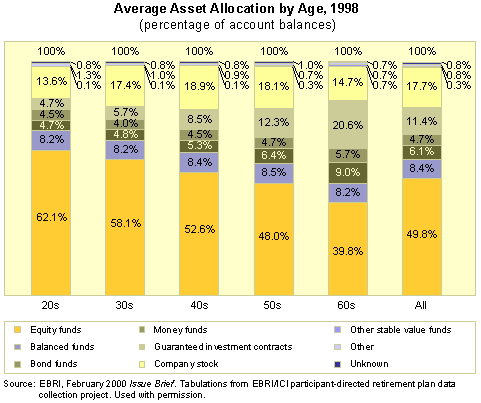
The 4% rule is something you've probably heard of, but how can you calculate it. This article will discuss the 4% Rule, how to invest and how you can create a simple budget to fund your retirement. We'll then look at other options for retirement savings such as investing in a brokerage. We'll also explore Social Security income substitution rates and a hypothetical scenario for retirement. Once you know what your retirement deficit is, you can figure out how much you need to save to reach your goal.
4% rule
The 4% retirement savings rule was based on historical data, focusing particularly on the severe market downturns in the 1930s. This approach allowed for inflation despite the fact the target inflation rate was only 2 percent per year. However, the current low inflation rate makes this approach obsolete and unsuitable to most investors. Today, investors should consider all options, including a mix of investments and fixed-income securities.

Social Security income replacement rate
For retirement savings, your Social Security income replacement rate is calculated using your income before retiring and your current spending levels. The higher your pre-retirement income, the lower your income replacement rate will be. To be safe, aim to replace 75% income after retirement. A household earning $70,000 should have a minimum of $106,000 to cover their retirement. In order to replace your income after retirement, households earning less $70,000 should aim for at least 90%.
Investing in brokerage accounts
Many investors are hesitant to invest in a brokerage account for retirement, and for good reason. A brokerage account is not an IRA, 401(k) or other retirement plan. There are no contribution or income limitations. A brokerage account could offer you a variety investment options such as stocks, bonds, publicly traded companies and companies linked with commodities. Investors must also consider their time horizon, risk tolerance, and financial goals before investing.
A simple budget for saving money for retirement
Before you start your retirement savings, you should create a budget. Make a list of your expenses and then compare it to your monthly income. Then, add in fun expenses and other savings goals. It will make the transition to retirement much simpler if you have a budget. If you're still working, make sure to use your old job as a reference. You are no longer the same person at your old job!

It's time to get serious about retirement savings
While you may not have been thinking about retirement and wealth accumulation in your early 20s, now is a good time to start saving for retirement. With less expenses to worry about, you may be able to save a little extra money each month. You may also be able to save more, so a modest goal like $25 a month in your early 20s will make a big difference in the future. You can save enough money if you start saving early enough.
FAQ
Who Should Use A Wealth Manager?
Anyone looking to build wealth should be able to recognize the risks.
It is possible that people who are unfamiliar with investing may not fully understand the concept risk. Poor investment decisions could result in them losing their money.
Even those who have already been wealthy, the same applies. They may think they have enough money in their pockets to last them a lifetime. They could end up losing everything if they don't pay attention.
As such, everyone needs to consider their own personal circumstances when deciding whether to use a wealth manager or not.
What age should I begin wealth management?
The best time to start Wealth Management is when you are young enough to enjoy the fruits of your labor but not too young to have lost touch with reality.
You will make more money if you start investing sooner than you think.
If you are planning to have children, it is worth starting as early as possible.
If you wait until later in life, you may find yourself living off savings for the rest of your life.
Why it is important to manage your wealth?
The first step toward financial freedom is to take control of your money. Understanding how much you have and what it costs is key to financial freedom.
It is also important to determine if you are adequately saving for retirement, paying off your debts, or building an emergency fund.
You could end up spending all of your savings on unexpected expenses like car repairs and medical bills.
What is risk management in investment management?
Risk management is the art of managing risks through the assessment and mitigation of potential losses. It involves identifying, measuring, monitoring, and controlling risks.
Investment strategies must include risk management. The purpose of risk management, is to minimize loss and maximize return.
These are the core elements of risk management
-
Identifying the source of risk
-
Monitoring the risk and measuring it
-
How to control the risk
-
Managing the risk
Statistics
- As of 2020, it is estimated that the wealth management industry had an AUM of upwards of $112 trillion globally. (investopedia.com)
- According to Indeed, the average salary for a wealth manager in the United States in 2022 was $79,395.6 (investopedia.com)
- A recent survey of financial advisors finds the median advisory fee (up to $1 million AUM) is just around 1%.1 (investopedia.com)
- These rates generally reside somewhere around 1% of AUM annually, though rates usually drop as you invest more with the firm. (yahoo.com)
External Links
How To
How to Invest your Savings to Make Money
You can earn returns on your capital by investing your savings into various types of investments like stock market, mutual fund, bonds, bonds, real property, commodities, gold and other assets. This is known as investing. You should understand that investing does NOT guarantee a profit, but increases your chances to earn profits. There are many options for how to invest your savings. One of these options is buying stocks, Mutual Funds, Gold, Commodities, Real Estate, Bonds, Stocks, ETFs, Gold, Commodities, Real Estate, Bonds, Stocks, Real Estate, Bonds, and ETFs. These are the methods we will be discussing below.
Stock Market
The stock market is an excellent way to invest your savings. You can purchase shares of companies whose products or services you wouldn't otherwise buy. The stock market also provides diversification, which can help protect you against financial loss. You can, for instance, sell shares in an oil company to buy shares in one that makes other products.
Mutual Fund
A mutual fund is an investment pool that has money from many people or institutions. They are professionally managed pools of equity, debt, or hybrid securities. The mutual fund's investment objective is usually decided by its board.
Gold
The long-term value of gold has been demonstrated to be stable and it is often considered an economic safety net during times of uncertainty. It can also be used in certain countries as a currency. Due to investors looking for protection from inflation, gold prices have increased significantly in recent years. The supply/demand fundamentals of gold determine whether the price will rise or fall.
Real Estate
Real estate refers to land and buildings. When you buy realty, you become the owner of all rights associated with it. Rent out a portion your house to make additional income. You might use your home to secure loans. The home may be used as collateral to get loans. Before buying any type property, it is important to consider the following things: location, condition and age.
Commodity
Commodities are raw materials like metals, grains, and agricultural goods. As these items increase in value, so make commodity-related investments. Investors who want to capitalize on this trend need to learn how to analyze charts and graphs, identify trends, and determine the best entry point for their portfolios.
Bonds
BONDS ARE LOANS between companies and governments. A bond is a loan where both parties agree to repay the principal at a certain date in exchange for interest payments. The interest rate drops and bond prices go up, while vice versa. A bond is purchased by an investor to generate interest while the borrower waits to repay the principal.
Stocks
STOCKS INVOLVE SHARES OF OWNERSHIP IN A COMMUNITY. A share represents a fractional ownership of a business. You are a shareholder if you own 100 shares in XYZ Corp. and have the right to vote on any matters affecting the company. When the company earns profit, you also get dividends. Dividends, which are cash distributions to shareholders, are cash dividends.
ETFs
An Exchange Traded Fund or ETF is a security, which tracks an index that includes stocks, bonds and currencies as well as commodities and other asset types. ETFs are traded on public exchanges like traditional mutual funds. The iShares Core S&P 500 eTF (NYSEARCA – SPY), for example, tracks the performance Standard & Poor’s 500 Index. This means that if SPY was purchased, your portfolio would reflect its performance.
Venture Capital
Venture capital is private financing venture capitalists provide entrepreneurs to help them start new businesses. Venture capitalists lend financing to startups that have little or no revenue, and who are also at high risk for failure. Venture capitalists typically invest in companies at early stages, like those that are just starting out.